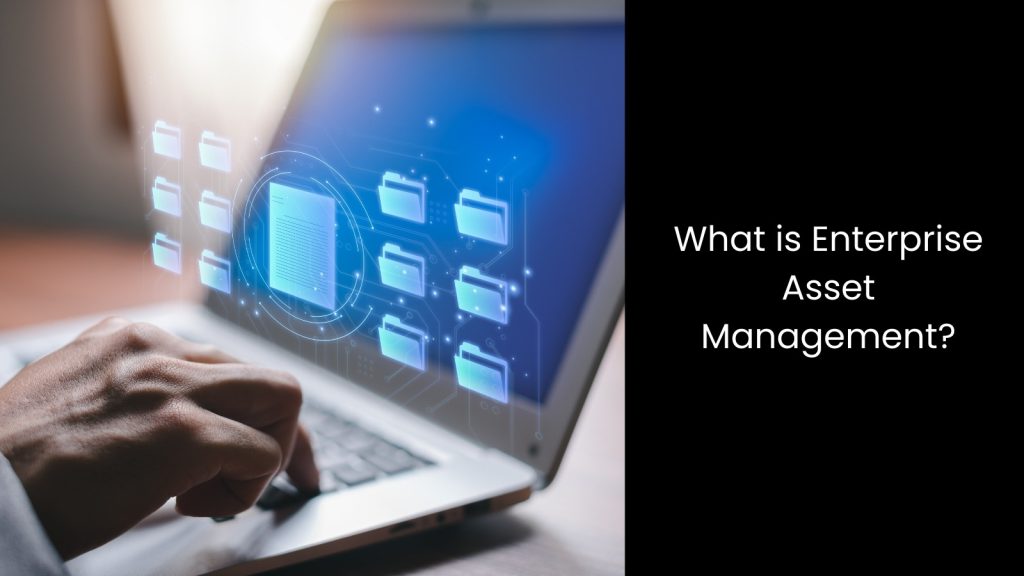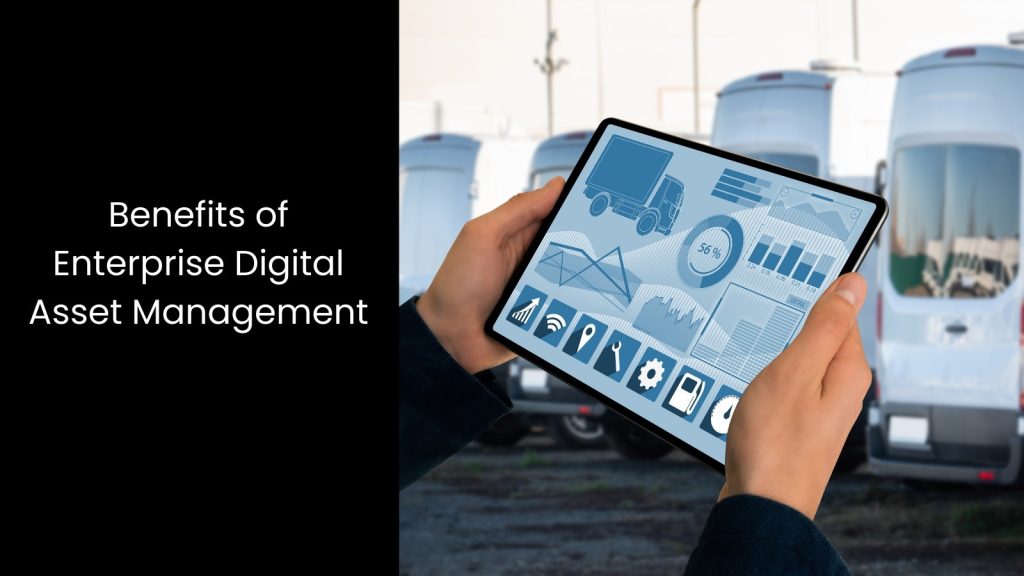Since it is still the beginning of 2025, you may be planning to invest in more assets for your enterprise to keep up with growth and technological advancements. There is no doubt that the business landscape evolves with certain political circumstances around the world. In such a situation, managing these assets efficiently to gain maximum ROI will be the real struggle. Don’t you think so? However, you do not need to overthink this as you can implement a robust Enter Enterprise Asset Management or EAM, which is the best solution that enables businesses to track, maintain, and optimise their assets seamlessly. With new challenges on the horizon, such as rising operational costs, tighter regulations, and an increased focus on sustainability, investing in the right EAM system will not only help you make smarter decisions but also extend the life of your assets.
In this article, we focus on the role of Enterprise Asset Management and its strengths to make your enterprise’s 2025 successful.
We will understand
What is Enterprise Asset Management?

- This is a process of managing the assets of an enterprise to ensure they are used effectively, appropriately maintained, and deliver the maximum value throughout their life cycle.
- Enterprise asset management is a mechanism that involves monitoring physical assets, from machinery to IT infrastructure, through software that tracks their performance, condition, and maintenance needs. Therefore, it helps organisations streamline operations, cut costs, and prevent equipment failures by scheduling regular maintenance and tracking repairs.
- Do you wonder why is there a specific management for this aspect? The reason is that enterprises need specialised asset management because they handle large volumes of assets across various departments and locations, making it difficult to keep track manually.
- Without EAM, companies risk losing track of asset condition, wasting money on unnecessary replacements, or missing opportunities to extend an asset’s life.
Benefits of Enterprise Digital Asset Management

Better Asset Utilisation
Every enterprise has valuable assets, and some may have assets worth billions, yet many companies struggle to make the most of what they own.
EAM helps enterprises optimise their use of existing assets, ensuring they do not sit idle or get wasted. With EAM, businesses can track the performance and usage of each asset in real time, giving them a clear picture of which assets are being used efficiently and which are not. This data allows organisations to adjust their maintenance schedules, make informed purchasing decisions, and identify underperforming assets before they become problematic.
Plus, EAM systems also prevent duplication by providing a centralised record of all assets, so teams will not unknowingly purchase or use the same equipment across different departments. As a result, companies avoid unnecessary costs and ensure they are not spending on assets that are not needed.
In addition, EAM helps maximise asset life by ensuring assets are regularly maintained and repaired, avoiding costly breakdowns. With better utilisation, enterprises can boost productivity, improve service delivery, and reduce operational costs without doubts.
Version Control
Enterprises do not have only one set of assets throughout their whole business journey; assets evolve, get upgraded, and sometimes change hands.
Enterprise asset management is the weapon that helps keep track of these changes through version control, allowing businesses to maintain a clear history of each asset’s journey.
With version control, EAM systems document each update, repair, or modification made to an asset, so companies always know what has been done, when, and by whom. This way, businesses can easily track the condition of each asset over time and understand how it has been used, maintained, or modified. If a problem arises, version control ensures users can refer to previous changes to determine what might have caused it.
Further, EAM systems help teams avoid mistakes, such as using outdated parts or applying incorrect maintenance procedures, because the system clearly shows the most recent version of an asset’s specifications. Moreover, businesses can set reminders for necessary upgrades or replacements by reviewing the history of each asset.
With a solid version control system in place, companies can manage assets effectively, ensure consistency, and make informed decisions about future investments.
Mobile Accessibility
It is always a convenience if an enterprise can access important information on the go, especially when it comes to managing assets. The latter provides mobile accessibility, allowing employees to track, update, and maintain assets from anywhere, using their smartphones or tablets.
This flexibility is a true miracle for teams working in the field, such as maintenance crews, who no longer need to return to the office to access asset data or report on their work.
With mobile access, they can update asset conditions, request repairs, or even schedule real-time maintenance tasks, keeping everyone on the same page. Managers also benefit from mobile accessibility, as they can monitor asset performance, approve requests, and make quick decisions from any location. This real-time access improves efficiency and reduces delays, as staff no longer need to wait for updates or rely on paper records.
Mobile-enabled EAM systems also help improve data accuracy, as team members can enter information on-site, reducing the risk of errors that could occur when transferring data later. So, you can see that with mobile accessibility, enterprises can manage assets more effectively, make faster decisions, and improve productivity across all departments.
Cost Efficiency
Cost is an interwoven fact that comes with managing assets in any enterprise. How can companies keep it under control?
This is where enterprise asset management helps companies reduce unnecessary expenses and improve cost efficiency. EAM systems provide businesses real-time data on their assets, allowing them to monitor performance and condition closely. This data helps companies identify when maintenance or repairs are needed, preventing expensive breakdowns that could disrupt operations.
With an EAM system, companies can set preventive maintenance schedules so they do not spend money on emergency fixes or prematurely replace assets. Also, EAM helps businesses avoid over-purchasing or duplicating assets by giving a clear overview of what is already in use. This reduces the need for excess inventory, which can tie up capital.
EAM also helps companies extend the life of their assets by ensuring they are properly maintained, which delays costly replacements. The system also makes tracking and managing warranties, repairs, and service contracts easier, ensuring that businesses take full advantage of any cost-saving opportunities.
With these benefits combined, enterprises can reduce operational costs, optimise asset use, and make smarter financial decisions. It is indeed a fact that EAM saves money on the one hand and improves the long-term economic health of an enterprise on the other hand.
Reduced Redundancy
Duplication of assets can cost a company a million in terms of wasted resources, unnecessary purchases, or lost time.
EAM helps prevent this issue by providing a centralised system to track and monitor all assets. With EAM, employees across departments can view real-time data about the company’s assets, ensuring everyone knows what is already available and in use.
This visibility prevents different teams from unknowingly purchasing the same asset or using the same digital resources.
It is certain that EAM systems also allow for better asset categorisation, making it easier to organise and find items without duplication. When assets are correctly tracked, companies can eliminate redundant tools, software, or equipment no longer needed, cutting down on waste.
Moreover, EAM improves coordination and communication between departments. This ensures the right assets are in the right places at the correct times, saving money and reducing unnecessary expenses.
Analytics and Reporting
These systems potentially collect and organise data from all assets, including performance, usage, maintenance, and repair history. This allows businesses to generate detailed reports on asset conditions, upcoming maintenance, and potential risks.
With these reports, managers can identify patterns and trends, such as which assets are underperforming or need frequent repairs, helping them plan for future needs. Analytics tools in EAM also make tracking costs and monitoring asset life cycles easier so businesses can reduce unnecessary expenses and maximise asset efficiency.
Through comprehensive reporting, companies can make better decisions, prioritise investments, and effectively allocate resources. EAM not only makes it easier to track assets but also helps businesses identify areas for improvement and optimise operations.
Integration with Other Systems
This makes it easier for businesses to connect and integrate with other systems, like ERP (Enterprise Resource Planning), sensors, warehouse management systems, etc.
When EAM works with ERP, it streamlines inventory management, purchasing, and financial reporting processes. The integration helps businesses track assets more accurately, avoiding errors and delays in supply chains.
EAM can also connect with sensors to monitor real-time conditions of assets, like machinery or vehicles, providing data that helps prevent breakdowns and reduce maintenance costs. Furthermore, when EAM integrates with warehouse management systems, it improves asset tracking within storage facilities, ensuring items are located and managed efficiently. This interconnected approach lets businesses get a complete picture of their operations, from procurement to maintenance to storage.
It saves time, reduces human error, and ensures businesses use their assets to their maximum potential, making day-to-day operations smoother and more cost-effective.
Employing Right EAM Solutions for Business Enhancement in 2025

If you are still struggling with your enterprise assets, then you must know that implementing the right EAM solution in 2025 can transform how your business manages assets. With the ability to track, optimise, and maintain assets effectively, companies can achieve greater cost efficiency, reduce downtime, and improve productivity. With the right EAM solution from a reputed supplier, you can streamline your operations and unlock the full potential of your assets.

